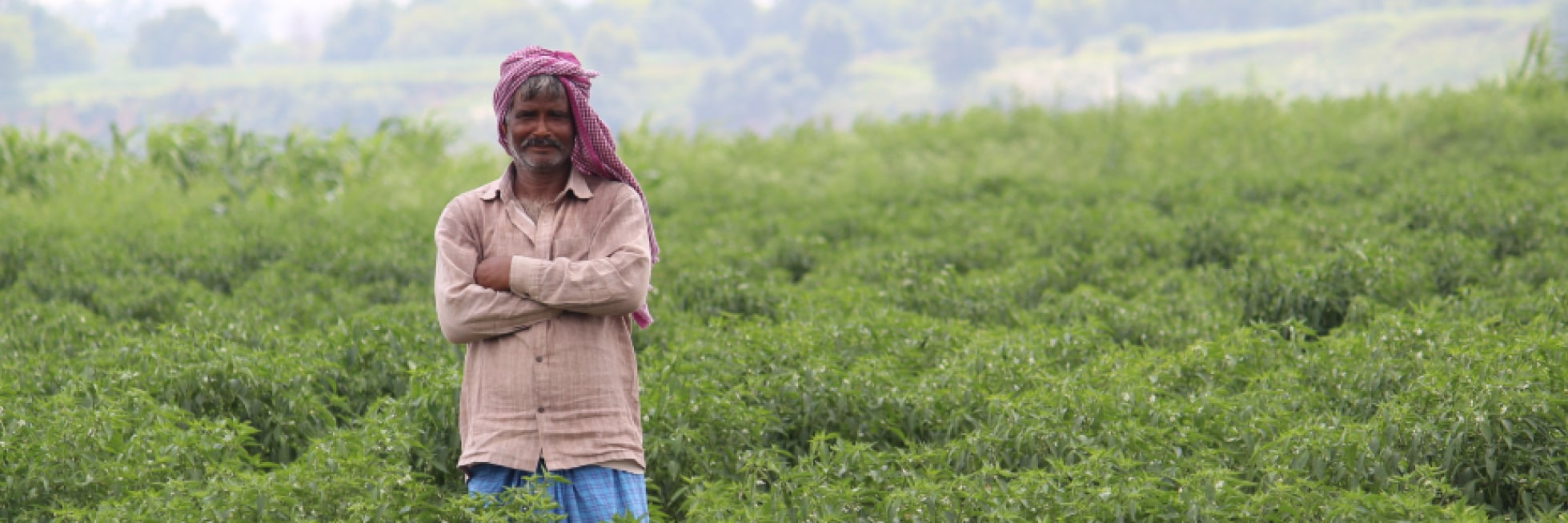Sustainable agriculture needs a collaborative approach

- Magazine
- Access to innovative health solutions
-
Covid-19
- Increased COVID-19 support for India
- Stronger Together in the fight against Covid-19
- Growing Enough during the Coronavirus Pandemic
- LIFE Stronger than lockdown
- Lessons for malaria elimination from covid-19
- The IT Army: catapulting digital change
- Safety at Vapi during Covid19
- Communications during covid-19
- Smallholder farmers and food security
- Digitalization
- Doubling farmers income
- Make in India
- People & Blogs
- Societal Engagement
- Sustainable agriculture
The need to scale up agriculture is getting more acute with rising global population. By 2050, the world will have 10 billion people, with India accounting for 1.73 billion (Source: United Nations). While the population is increasing, arable land is decreasing, and farmers are grappling with limited natural resources and climate change. Extreme weather conditions such as floods, droughts and poor rainfall are lowering crop productivity and farmer incomes.
To ensure safe, affordable & enough food and overcome farmers’ challenges around low productivity & income, it is critical to transform Indian agriculture. This calls for a long-term vision and roadmap that enables Indian farmers to earn sustainable farm incomes and be globally competitive. Creating a transformational agricultural policy roadmap requires a collaborative approach between the government, industry, farmers and the society. It also needs enabling policies and timebound targets focused on technological innovation, capacity building, market access and risk mitigation.
For instance, a new governance model could be considered to create crop focused ministries for cotton, horticulture, rice, corn etc. with end-to-end visibility of crop competitiveness both in India and globally. This will bring in policy clarity, consistency and help us shift towards a more targeted fiscal incentive regime. Additionally, government incentives should be targeted towards sustainable farm income and sustainable agriculture. This could be in the form of farmer incentives for efficient use of water used for cultivation, cover cost of hedging against commodity price fluctuations, reduction of greenhouse gas emissions, etc.

Smallholder farmers (who farm on less than two hectares of land) play a key role in ensuring India’s food security. One of the key priorities of the Indian government is doubling farmers’ incomes. Several industry players have introduced targeted programs to help smallholder farmers progress from subsistence farming to commercial farming. This is crucial for Indian agriculture, because when smallholder farmers will succeed in generating higher incomes, it will support rural job creation and increase the contribution of agriculture to the country’s economic growth. This in turn will make farming an attractive profession for future generations and bring more investment to the industry.
Digital tools in agriculture can help farmers produce with less resources (water, land and energy) and make data-driven decisions in real-time. New technologies like drones are revolutionizing the world of smallholder farming. Drones can help identify weeds, pests and diseases and localize application of agrochemicals. Farmers in China & South East Asia have already started using drones to reduce their risk and improve profitability. Once drones are approved for use in Indian farms, it can provide farmers significant benefits including targeted and timely use of crop protection chemicals to reduce crop risks.
Along with new technological innovations to support sustainable agriculture, we also need a greater thrust on capacity building to make existing technologies available to subsistence farming communities. One good example is that of hybrid seeds. Hybrid seeds use lesser water for cultivation compared to traditional varieties, can better withstand diseases, insect pests and increased levels of water salinity. They also offer increased yield potential as well as higher farm incomes. But the rate of hybridization in India is quite low compared to other large agricultural nations even in Asia. Public-private partnerships, collaborative business models and CSR initiatives can greatly accelerate hybridization in crops such as rice, corn, horticulture etc.
The industry and government are already supporting the shift to sustainable agriculture by popularizing the use of science-based good agronomic practices (GAP) that are climate-smart and financially viable. Enhanced collaboration will be a critical imperative to transform Indian agriculture and make it globally competitive. The government could identify specific areas along the agri value chain where public-private partnership (PPP) will benefit farmers. This will encourage the private sector to come forward with higher investments for innovation.
As we move into a new year and a new decade, I am convinced and extremely hopeful that with the right thought leadership and government support, the agriculture sector can rewrite India’s growth story and place our country in the league of the top five global agricultural markets.
This article was published on January 20, 2020 by The Financial Express – an Indian English language business newspaper






